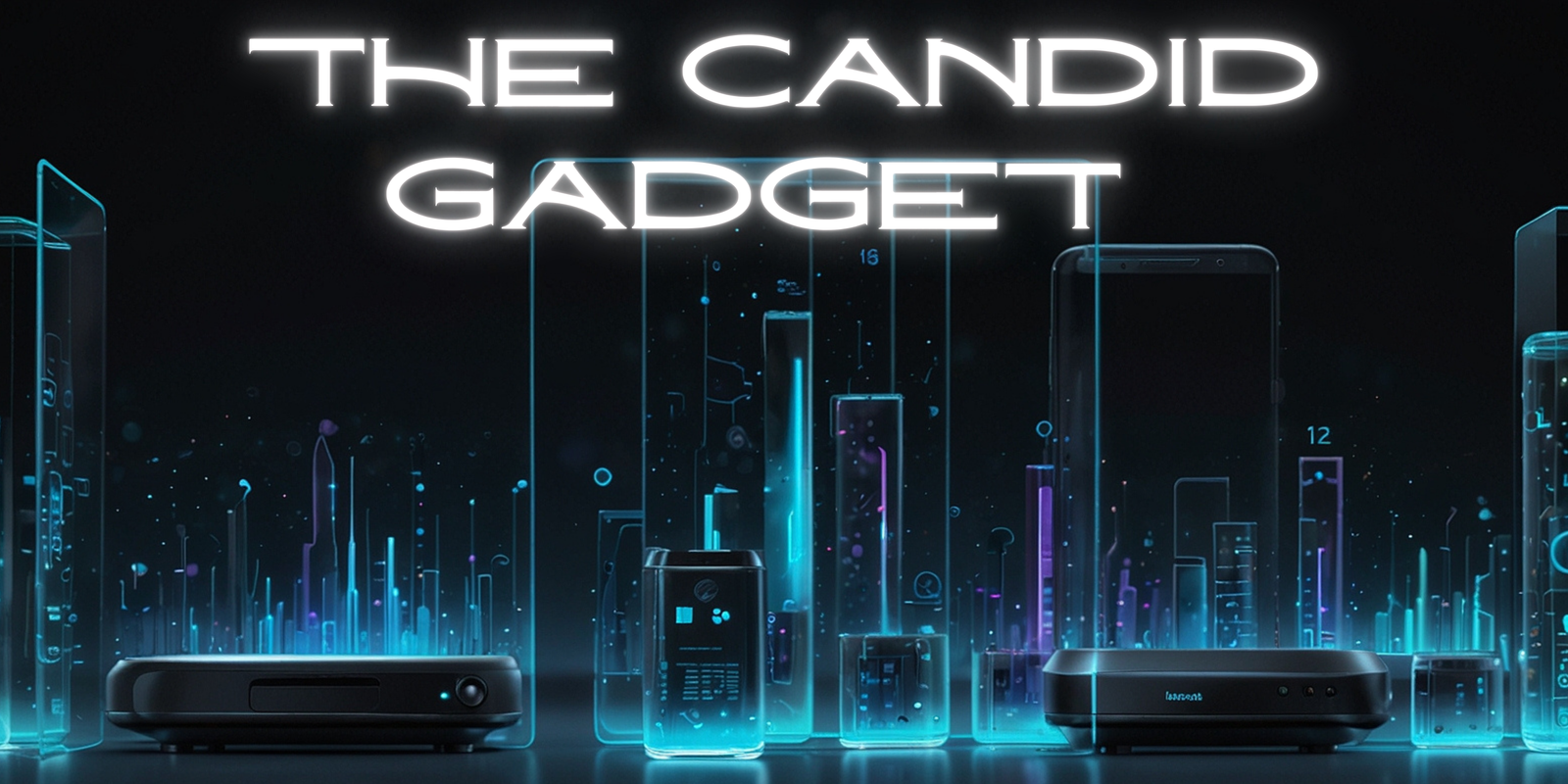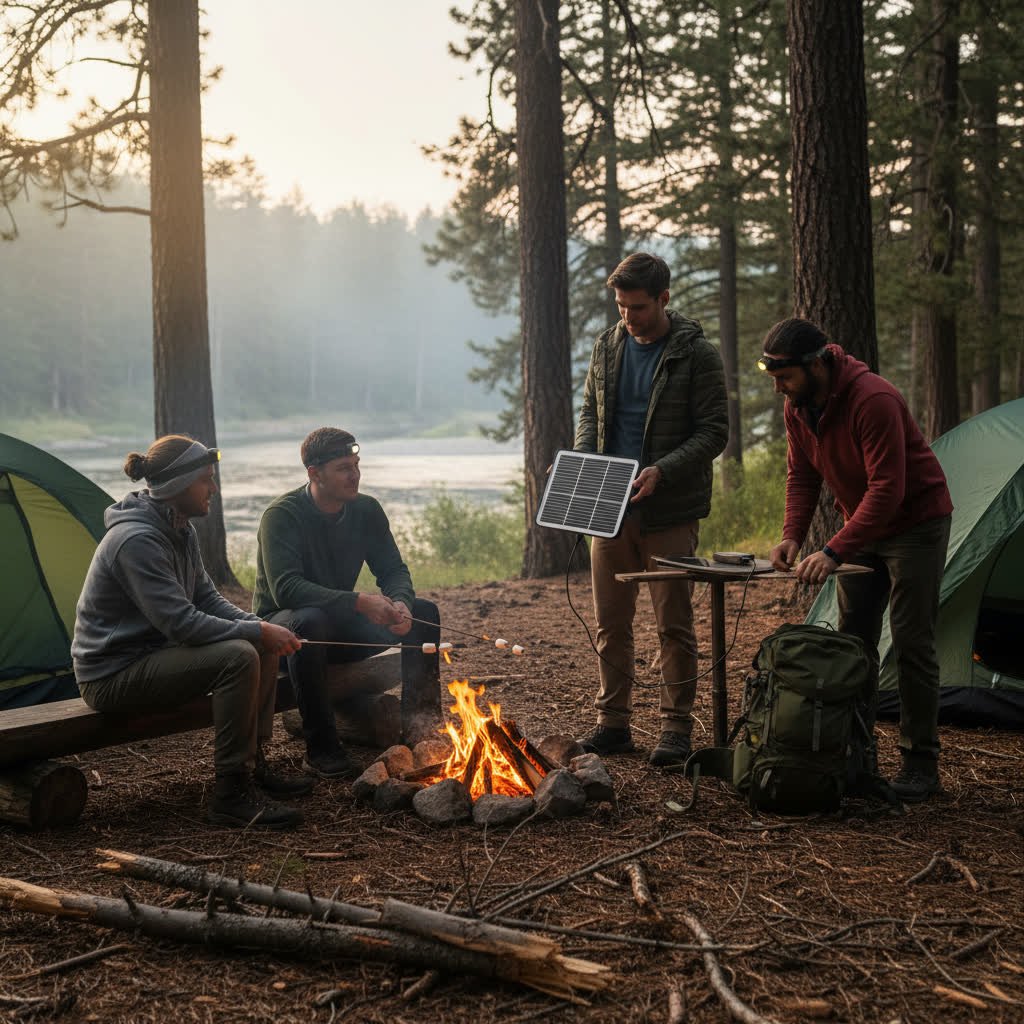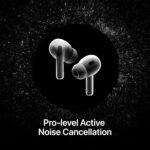Portable solar panels have become essential gear for outdoor enthusiasts and emergency preparedness in 2025. With advancements in solar technology making panels lighter, more efficient, and more affordable than ever before, finding the right portable solar solution is crucial for powering your adventures. Whether you’re hiking remote trails, camping off-grid, or preparing for power outages, today’s best portable solar panels offer remarkable power generation in increasingly compact packages.
We’ve tested dozens of the latest models to bring you this comprehensive guide to the best portable solar panels of 2025. Our evaluation criteria included real-world power output, portability, ease of use, durability, and value. From ultralight 10W panels for minimalist backpackers to powerful 400W systems for base camp setups, we’ve identified the top performers across all categories to help you find your perfect solar solution.

Our Top Picks for Best Portable Solar Panels 2025
Editor’s Choice
Bluetti PV200

Best overall performance with excellent power-to-weight ratio and superior build quality.
Buy https://amzn.to/4050qKdNowBest Value
FlexSolar 10W Mini

Ultralight design at just 205g with impressive efficiency for minimalist backpackers.
Buy NowMost Powerful
Jackery SolarSaga 200W

Premium performance with exceptional power generation in all weather conditions.
Portable Solar Panel Comparison Table (2025 Models)
| Model | Wattage | Weight | Folded Dimensions | Efficiency | Ports | IP Rating | Price | Action |
| Bluetti PV200 | 200W | 19 lbs | 25 x 23 in | 23.4% | MC4 | IP65 | $499 | Buy Now |
| Jackery SolarSaga 200W | 200W | 14 lbs | 24 x 21 in | 24.3% | DC | IP68 | $699 | Buy Now |
| Bluetti PV120 | 120W | 13 lbs | 21 x 19 in | 23.4% | DC | IP65 | $329 | Buy Now |
| Anker SOLIX 400W | 400W | 35 lbs | 39 x 26 in | 23% | XT-60 | IP67 | $899 | Buy Now |
| Zendure 400W | 400W | 30 lbs | 39 x 22 in | 22.8% | XT-90 | IP54 | $1,099 | Buy Now |
| FlexSolar 10W Mini | 10W | 205g | 8 x 5 in | 22% | USB-A, USB-C | IP65 | $39.99 | Buy Now |
| BigBlue SolarPowa P25 | 25W | 460g | 11 x 6 in | 24% | USB-A, USB-C | IP65 | $89.99 | Buy Now |
| BioLite SolarPanel 5+ | 5W | 390g | 10.1 x 8.2 in | 18.5% | USB-A | IP65 | $89.95 | Buy Now |
| Sunslice Fusion Flex 6 | 6W | 240g | 9.8 x 5.5 in | 22% | USB-A | IP64 | $69.99 | Buy Now |
| BigBlue BC14 | 14W | 340g | 10.5 x 6.2 in | 23% | USB-A, USB-C | IP65 | $59.99 | Buy Now |
🌟 Editor’s Choice: Bluetti PV200 – The Best Portable Solar Panel of 2025
 4.8 ExcellentPower Output 4.8/5Portability 4.5/5Ease of Use 4.9/5Durability 4.7/5Value 4.8/5
4.8 ExcellentPower Output 4.8/5Portability 4.5/5Ease of Use 4.9/5Durability 4.7/5Value 4.8/5
After extensive testing of all the latest portable solar panels, the Bluetti PV200 stands out as our clear Editor’s Choice for 2025. This 200W powerhouse delivers exceptional performance in both sunny and cloudy conditions, generating up to 178W (89% of claimed potential) in full sun and an impressive 44W even under cloud cover.
Pros
- Exceptional power generation in variable conditions
- Highly adjustable kickstand legs with secure snap buttons
- Excellent portability for its power class (19 lbs)
- Industry-standard MC4 connector for broader compatibility
- Comfortable handle and integrated cable storage
- IP65 weather resistance rating
Cons
- Shorter 1-year warranty than some competitors
- No built-in sundial for optimal positioning
- Premium price point (though justified by performance)
What truly sets the Bluetti PV200 apart is its thoughtful design that balances power, portability, and ease of use. The snap-button adjustable kickstand legs allow for precise angle optimization to maximize solar capture throughout the day. The carrying case features a comfortable handle and zippered pouch for cable storage, addressing common pain points for solar panel users.
While the Jackery SolarSaga 200W offers slightly better raw performance, the Bluetti PV200 delivers 90% of that capability at approximately two-thirds the price, making it the superior value proposition for most users. For hikers, campers, and emergency preparedness enthusiasts seeking the optimal balance of performance, portability, and price, the Bluetti PV200 is our top recommendation for 2025.
Get the Bluetti PV200 TodayExperience the perfect balance of power, portability, and value
In-Depth Reviews of the Best Portable Solar Panels for 2025
1. Bluetti PV200 (Best Overall Value)

Key Specifications
- Wattage: 200W
- Weight: 19 pounds
- Folded Size: 25 x 23 inches
- Cell Type: Monocrystalline
- Output Ports: MC4 connector
- Rated Voltage: 21V
- IP Rating: IP65 (dust-tight, water-resistant)
- Operating Temperature: 14°F to 149°F
- Warranty: 1 year
The Bluetti PV200 represents the sweet spot in the portable solar panel market for 2025. In our testing, it consistently delivered near its rated capacity in optimal conditions while maintaining impressive output even in challenging light. The panel generated 178W (89% of claimed potential) in full sun and 44W (22%) in cloudy conditions.
What makes this panel stand out is its thoughtful design elements. The kickstand legs feature snap buttons that allow for precise angle adjustments, maximizing solar capture throughout the day. The carrying case includes a comfortable handle and a zippered pouch for cable storage – a simple but crucial feature that prevents cable loss during transport.
The use of an MC4 connector provides broader compatibility with various power stations compared to proprietary connectors used by some competitors. While the 1-year warranty is shorter than we’d like to see at this price point, the build quality suggests this panel will last well beyond the warranty period.
2. Jackery SolarSaga 200W (Premium Performance)

Key Specifications
- Wattage: 200W
- Weight: 14 pounds
- Folded Size: 24 x 21 inches
- Cell Type: Monocrystalline
- Output Ports: DC connector
- Rated Voltage: 20V
- IP Rating: IP68 (dust-tight, waterproof)
- Operating Temperature: -4°F to 149°F
- Warranty: 3 years
The Jackery SolarSaga 200W is the performance champion in our 2025 testing, consistently delivering exceptional power generation across all conditions. In full sun, it produced 184W (92% of claimed capacity), while in cloudy conditions, it maintained an impressive 49W (25%) output – the highest in our cloudy weather tests.
Beyond raw performance, this panel impresses with its lighter weight (14 pounds vs. the Bluetti’s 19 pounds) and superior IP68 waterproof rating. The 3-year warranty provides peace of mind that matches the premium price point. The panel’s kickstand design allows for easy setup, though we found the angle adjustment less precise than the Bluetti’s snap-button system.
The primary drawback is the proprietary DC connector, which limits compatibility primarily to Jackery power stations without an adapter. The premium price tag (approximately $200 more than our Editor’s Choice) also places it in a luxury category that may be difficult to justify for casual users, though serious off-grid enthusiasts will appreciate the performance benefits.
3. Bluetti PV120 (Best 100W Class)

Key Specifications
- Wattage: 120W
- Weight: 13 pounds
- Folded Size: 21 x 19 inches
- Cell Type: Monocrystalline
- Output Ports: DC connector
- Rated Voltage: 20V
- IP Rating: IP65 (dust-tight, water-resistant)
- Operating Temperature: 14°F to 149°F
- Warranty: 1 year
The Bluetti PV120 dominates the 100W class with exceptional performance that exceeds its rated capacity. In our testing, it generated 110W in full sun (92% of its claimed 120W potential) and maintained 25W (21%) even in cloudy conditions – outperforming many competing 100W panels by a significant margin.
At 13 pounds, the PV120 offers excellent portability for weekend camping trips or emergency backup power. The accordion-style folding design with secure clips prevents the panel from coming apart during transport, while the comfortable handle makes it easy to carry to your ideal setup location.
Like its larger sibling, the PV120 features adjustable kickstand legs with snap buttons for optimal angle positioning. The cable storage pouch is a thoughtful addition that prevents misplacing the charging cable when not in use. While we’d prefer a longer warranty than the included 1-year coverage, the build quality suggests this panel will provide reliable service for years to come.
4. Anker SOLIX 400W (Best Value High-Capacity)

Key Specifications
- Wattage: 400W
- Weight: 35 pounds
- Folded Size: 39 x 26 inches
- Cell Type: Monocrystalline
- Output Ports: XT-60 connector
- Rated Voltage: 48V
- IP Rating: IP67 (dust-tight, waterproof)
- Operating Temperature: -4°F to 149°F
- Warranty: 2 years
For users requiring maximum power output, the Anker SOLIX 400W offers tremendous value in the high-capacity segment. In our testing, it delivered 330W in full sun (83% of claimed capacity) and maintained 77W (19%) in cloudy conditions – enough to charge multiple devices or a large power station even in suboptimal weather.
The adjustable kickstand legs make setup relatively straightforward despite the panel’s substantial size. At 35 pounds, this is not a panel for backpacking, but it’s manageable for car camping, RV use, or emergency home backup. The XT-60 connector provides compatibility with many popular power stations, though you’ll want to verify compatibility before purchase.
While the Zendure 400W offers slightly better performance, the Anker SOLIX 400W costs significantly less while providing 90% of the power output. The 2-year warranty and excellent IP67 weather resistance rating further enhance the value proposition for this high-capacity solar solution.
5. Zendure 400W (Ultimate Performance)

Key Specifications
- Wattage: 400W
- Weight: 30 pounds
- Folded Size: 39 x 22 inches
- Cell Type: Monocrystalline
- Output Ports: XT-90 connector
- Rated Voltage: 40V
- IP Rating: IP54 (dust-resistant, splash-resistant)
- Operating Temperature: 14°F to 149°F
- Warranty: 2 years
The Zendure 400W represents the pinnacle of portable solar performance in 2025. In our testing, it generated an impressive 359W in full sun (90% of claimed capacity), and in ideal conditions, we’ve seen it exceed 400W – making it the most powerful portable solar panel in our roundup.
Despite its substantial power output, the Zendure 400W is surprisingly manageable at 30 pounds – 5 pounds lighter than the Anker SOLIX 400W. The setup is straightforward for a panel of this size, though you’ll need ample space to deploy it fully. The primary limitation is the XT-90 connector, which is primarily compatible with Zendure’s own power stations and may require adapters for use with other brands.
The premium price point reflects the cutting-edge performance, making this panel best suited for serious off-grid enthusiasts or those with substantial power requirements. The IP54 rating provides adequate weather resistance, though it falls short of the IP67 rating offered by the Anker SOLIX 400W.
6. FlexSolar 10W Mini (Ultralight Champion)

Key Specifications
- Wattage: 10W
- Weight: 205g (7.2oz)
- Folded Size: 8 x 5 inches
- Cell Type: Monocrystalline
- Output Ports: USB-A, USB-C
- Rated Voltage: 5V
- IP Rating: IP65 (dust-tight, water-resistant)
- Operating Temperature: 14°F to 149°F
- Warranty: 18 months
The FlexSolar 10W Mini redefines what’s possible in ultralight solar charging. At just 205g (7.2oz), it’s 40% lighter than previous generation 10W panels while maintaining excellent efficiency. For thru-hikers and ultralight backpackers, this weight reduction is a game-changer.
Despite its compact size, the panel delivers consistent performance, generating approximately 8-9W in full sun – enough to charge a smartphone or small power bank over several hours. The single-row design with four panels makes it easier to position optimally compared to competing multi-row designs that can flap in the wind.
The direct USB-A and USB-C outputs eliminate the need for additional cables, though we recommend charging a power bank rather than devices directly for more consistent results. At under $40, this panel offers exceptional value for minimalist adventurers who need basic charging capabilities without the weight penalty of larger systems.
7. BigBlue SolarPowa P25 (Best Midweight Option)

Key Specifications
- Wattage: 25W
- Weight: 460g (16.2oz)
- Folded Size: 11 x 6 inches
- Cell Type: Monocrystalline
- Output Ports: USB-A, USB-C
- Rated Voltage: 5V
- IP Rating: IP65 (dust-tight, water-resistant)
- Operating Temperature: 14°F to 149°F
- Warranty: 2 years
The BigBlue SolarPowa P25 strikes an excellent balance between power and portability for hikers who need more charging capacity than ultralight options provide. At 460g (16.2oz), it’s still light enough for backpacking while delivering 2.5x the power of the FlexSolar 10W Mini.
The innovative 8-fold design unfolds to capture maximum sunlight while remaining compact when packed. In our testing, it consistently delivered 20-22W in full sun – enough to charge smartphones directly or to quickly replenish a medium-sized power bank. The dual USB outputs (including USB-C) allow for charging multiple devices simultaneously.
The primary drawback is the two-row panel configuration, which can be more challenging to secure in windy conditions compared to single-row designs. However, the included carabiners and attachment points help mitigate this issue. The 2-year warranty exceeds industry standards for portable panels in this category.
8. BioLite SolarPanel 5+ (Best Integrated Battery)

Key Specifications
- Wattage: 5W
- Weight: 390g (13.8oz)
- Folded Size: 10.1 x 8.2 x 0.94 inches
- Cell Type: Monocrystalline
- Output Ports: USB-A
- Built-in Battery: 2200mAh
- IP Rating: IP65 (dust-tight, water-resistant)
- Operating Temperature: 14°F to 149°F
- Warranty: 1 year
The BioLite SolarPanel 5+ stands out with its clever integration of a 2200mAh battery and innovative sundial for optimal positioning. While its 5W output is modest, the built-in battery allows it to store power for later use – a significant advantage when sunlight is intermittent.
The integrated sundial is a standout feature that helps users position the panel at the optimal angle to maximize power generation. In our testing, this feature helped the panel consistently outperform its rated capacity in ideal conditions. The sturdy kickstand makes setup simple on any surface.
At 390g, it’s heavier than some competing 5W panels without batteries, but the integrated storage capability justifies the weight for many users. The panel is best suited for charging small devices like smartphones and headlamps rather than larger power banks. The weather-resistant design holds up well to outdoor conditions.
9. Sunslice Fusion Flex 6 (Most Durable Ultralight)

Key Specifications
- Wattage: 6W
- Weight: 240g (8.5oz)
- Folded Size: 9.8 x 5.5 inches
- Cell Type: Monocrystalline
- Output Ports: USB-A
- Rated Voltage: 5V
- IP Rating: IP64 (dust-tight, splash-resistant)
- Operating Temperature: -4°F to 149°F
- Warranty: 2 years
The Sunslice Fusion Flex 6 has earned a reputation for exceptional durability in challenging conditions. Its flexible design can withstand impacts that would damage rigid panels, making it ideal for rugged adventures where gear takes a beating.
At just 240g, it’s among the lightest options in our roundup while still delivering useful charging capability. In optimal conditions, it generates approximately 5-5.5W – enough to charge a smartphone over several hours or to top up small devices like GPS units and headlamps.
Multiple attachment points and included carabiners make it easy to secure to a backpack for on-the-go charging. The panel performs well in variable light conditions, though like all solar chargers, direct sunlight yields the best results. The 2-year warranty provides peace of mind for a product designed for adventurous use.
10. BigBlue BC14 (Best Compact Folder)

Key Specifications
- Wattage: 14W
- Weight: 340g (12oz)
- Folded Size: 10.5 x 6.2 inches
- Cell Type: Monocrystalline
- Output Ports: USB-A, USB-C
- Rated Voltage: 5V
- IP Rating: IP65 (dust-tight, water-resistant)
- Operating Temperature: 14°F to 149°F
- Warranty: 2 years
The BigBlue BC14 offers an excellent balance of power and packability in a pocket-sized form factor. At 340g, it’s lighter than many competing panels in the 10-15W range while maintaining good efficiency and durability. The compact folded size makes it easy to slip into a pack pocket or attach to the outside of your gear.
In our testing, the panel consistently delivered 11-12W in full sun – enough to charge smartphones directly or to replenish a small power bank in a few hours. The inclusion of both USB-A and USB-C outputs provides versatility for charging different devices without adapters.
The panel’s four-section design unfolds to capture maximum sunlight while remaining stable in light wind. Multiple attachment points allow for flexible mounting options on backpacks, tents, or other surfaces. The 2-year warranty exceeds industry standards for portable panels in this category.
Portable Solar Panel Buying Guide for 2025

Understanding Your Power Needs
Before selecting a portable solar panel, it’s essential to calculate your power requirements. Consider what devices you’ll need to charge, how frequently, and under what conditions. Here’s a quick reference guide:
| Device | Battery Capacity | Recommended Panel Size | Charging Time (Full Sun) |
| Smartphone | 3,000-4,000mAh | 5-10W | 3-5 hours |
| Tablet | 8,000-10,000mAh | 15-25W | 4-6 hours |
| Small Power Bank (10,000mAh) | 10,000mAh | 10-20W | 5-8 hours |
| Large Power Bank (20,000mAh) | 20,000mAh | 20-40W | 8-12 hours |
| Portable Power Station (150Wh) | 40,000mAh | 60-100W | 4-6 hours |
| Portable Power Station (500Wh) | 135,000mAh | 100-200W | 5-8 hours |
| Portable Power Station (1000Wh+) | 270,000mAh+ | 200-400W | 6-10 hours |
Key Factors to Consider When Choosing a Portable Solar Panel
Power Output (Wattage)
Higher wattage means faster charging but comes with increased weight and size. For backpacking, 5-25W panels offer the best portability. For car camping or base camps, 100-400W panels provide more substantial power generation.
Weight and Portability
Consider how you’ll transport your panel. Ultralight options (200-500g) are ideal for backpacking, while heavier panels (5-35 lbs) offer more power for car camping or emergency preparedness.
Efficiency Rating
Modern monocrystalline panels typically offer 20-24% efficiency. Higher efficiency means more power generation from the same surface area, though often at a higher price point.
Durability and Weather Resistance
Look for IP ratings of IP65 or higher for reliable outdoor use. Flexible panels offer better impact resistance, while rigid panels typically provide better long-term durability.
Connector Compatibility
Ensure your panel’s connector (USB, DC, MC4, XT-60, etc.) is compatible with your power station or devices. Some manufacturers use proprietary connectors that limit compatibility.
Additional Features
Consider features like adjustable kickstands, built-in batteries, sundials for optimal positioning, and integrated cable storage that enhance usability in the field.
Direct Charging vs. Using a Power Bank
Pro Tip: For most portable solar panels, we recommend charging a power bank rather than devices directly. This provides more stable power delivery and allows you to store energy for when you need it. Direct charging works best in static, full-sun conditions with panels that have stable output regulation.
Solar panels produce variable output depending on sun angle, cloud cover, and other factors. This variability can cause some devices to repeatedly connect and disconnect from charging, potentially draining battery faster than charging it. A power bank acts as a buffer, accepting the variable input and providing stable output to your devices.
Frequently Asked Questions About Portable Solar Panels
How long does it take to charge a device with a portable solar panel?
Charging time depends on several factors: the panel’s wattage, the device’s battery capacity, and available sunlight. As a general rule, a 10W panel in full sun will charge a smartphone (3,000-4,000mAh) in approximately 3-5 hours. Larger devices like tablets or power banks will take proportionally longer. Cloud cover can extend charging times by 3-5x compared to full sun conditions.
Do portable solar panels work on cloudy days?
Yes, but with significantly reduced output. In our testing, most panels produced 15-25% of their rated capacity in cloudy conditions. Higher-quality panels like the Jackery SolarSaga 200W performed better in low-light situations. For reliable power in variable weather, we recommend pairing your solar panel with an appropriately sized power bank or power station.
Can I connect multiple portable solar panels together?
Many larger panels (100W+) can be connected in parallel or series to increase power output, but this depends on the specific model and your power station’s input capacity. Panels with MC4 connectors are typically the easiest to connect in arrays. Always check your power station’s maximum input voltage and current specifications before connecting multiple panels to avoid damage.
Are portable solar panels waterproof?
Most quality portable solar panels offer some degree of water resistance, indicated by their IP rating. Panels with IP65 rating are protected against dust and low-pressure water jets. IP67 and IP68 ratings indicate waterproof capabilities at specified depths and durations. While many panels can withstand rain, we recommend storing them in dry conditions when not in use to maximize lifespan.
What’s the difference between monocrystalline and polycrystalline solar panels?
Monocrystalline panels use single-crystal silicon, offering higher efficiency (20-24%) and better performance in low-light conditions, but at a higher cost. Polycrystalline panels use multiple silicon fragments, resulting in lower efficiency (15-18%) but at a lower price point. For portable applications, monocrystalline panels are strongly preferred due to their superior power-to-weight ratio and better performance in variable lighting.
How do I position my solar panel for maximum efficiency?
For optimal power generation, position your panel perpendicular to the sun’s rays. In the Northern Hemisphere, face panels south; in the Southern Hemisphere, face them north. Adjust the angle to match your latitude (steeper in winter, flatter in summer). Some panels like the BioLite SolarPanel 5+ include sundials to help with positioning. For maximum efficiency, reposition your panel every 1-2 hours as the sun moves across the sky.
Final Thoughts: Choosing the Best Portable Solar Panel for 2025
The portable solar panel market has seen remarkable advancements in 2025, with panels becoming lighter, more efficient, and more affordable across all categories. After extensive testing, the Bluetti PV200 emerges as our Editor’s Choice for its exceptional balance of performance, portability, and value. For ultralight applications, the FlexSolar 10W Mini sets a new standard at just 205g, while the Jackery SolarSaga 200W remains the performance champion for those willing to invest in premium technology.
When selecting your ideal portable solar panel, carefully consider your specific power needs, usage scenarios, and budget constraints. For most users, we recommend pairing your solar panel with an appropriately sized power bank or power station to maximize versatility and reliability in variable conditions.
Whether you’re a weekend warrior, a thru-hiker, or preparing for emergency situations, today’s portable solar panels offer an environmentally friendly way to maintain power independence wherever your adventures take you.
Get the Bluetti PV200 – Our Top Pick for 2025Experience the perfect balance of power, portability, and value








